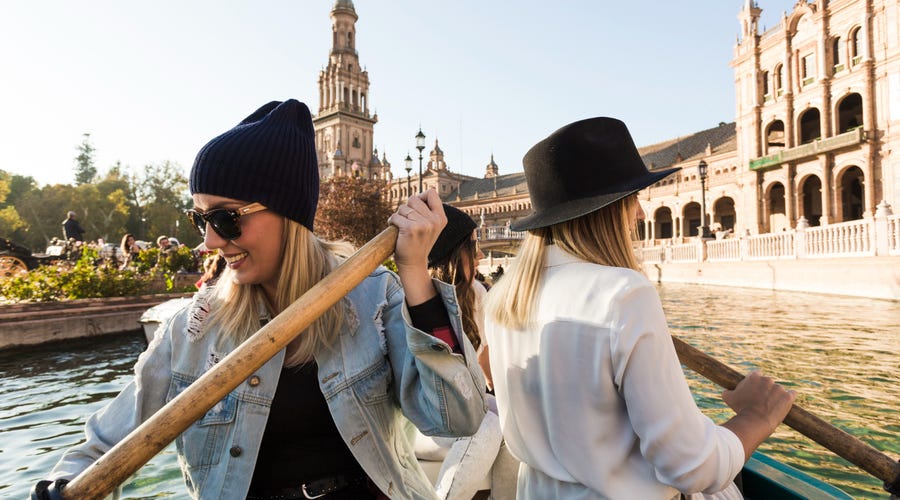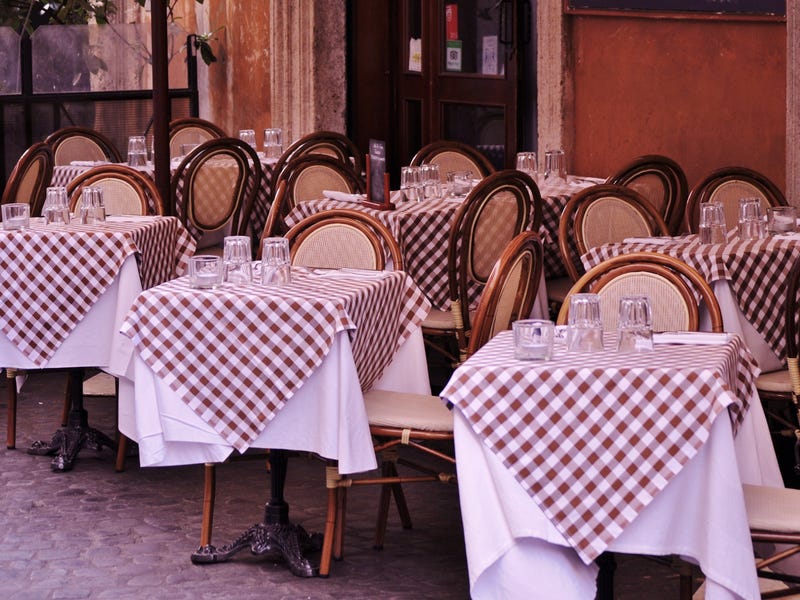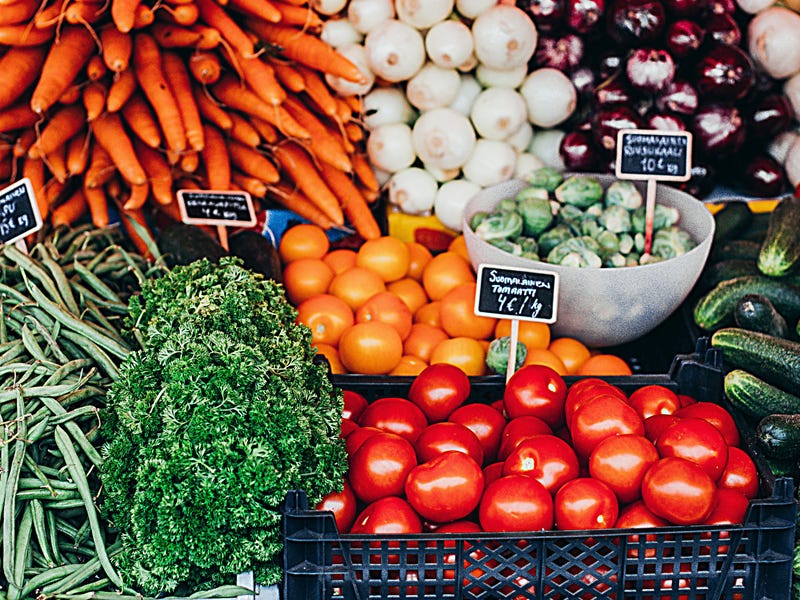“We are all pilgrims who seek Italy”, famously said Johann Wolfgang von Goethe. While the world is a huge place full of destinations worth going on a pilgrimage to, we, as the German writer and poet above, are undoubtedly partial to Italy. And we believe you might be too, our dear reader.
Maybe you took an unforgettable holiday to Rome, and once back home, you felt the need to dive deeper into Italian culture. Or you have a crush on an Italian and are willing to know more about your love interest’s values and traditions. Or you are already learning the Italian language and want to expand your understanding of the country’s history and art. Whatever your reasons are, you’re in the right place!
Let’s all get into this bright red, roaring Ferrari - yes, we know a Ferrari can only fit two people max, but let us have our dreamand take a nice tour of Italian culture, traditions, history, and art. Fasten your seat belt!

Historical roots of Italian culture
The fact that Italy - more or less - the country we know today was only born in 1861 when a series of different states were unified into one reign under the Savoy dynasty, is the reason for the most important characteristic of its culture: its vast diversity.
Over the course of millennia, Italy has been the land of choice for dozens of different people, each one with its own language, beliefs, customs, arts and recipes, and this has created a complex cultural landscape that’s shaped by regional differences. A puzzle of histories, more than a single one.
Nonetheless, there’s one population who has most likely permeated Italian culture more than any other—We’re talking about the Romans.
With their powerful language, immense military strength, organizational talent, engineering expertise and pragmatic approach to religion, the Romans were able to conquer the Italian peninsula first, and then most of Europe, the Mediterranean and the Middle East.
But Italy remained for them “Domina Provinciarum”, the ruler of all provinces, and its free inhabitants were all considered full-right Roman citizens. Although, we must say, Roman’s Italy did not include Sardinia and Sicily, which were considered foreign provinces.
Today’s Italian culture still owes a lot to the Romans. First of all its language, since Italian is not only a neo-latin language, but the second closest one to the original Latin, with the first one being, ironically, Sardinian. Then, the legal system, a network of roads, the structure of cities and, naturally, an amazing series of monuments which are a symbol of Italy in the world.
If after the fall of the Western Roman Empire Italy became somehow more peripheric for the course of Europe, this doesn’t mean that Italian culture wasn’t flourishing. Absolutely not an epoch of darkness, the Middle Ages shaped the identity and architecture of some of the most beautiful Italian cities: Genoa, Siena, Venice, Bologna, Florence, Palermo, Pisa, Ferrara and many others lived centuries of growth, with the construction of some of their most iconic buildings.
Starting in the XVth century, the Renaissance put men (and much less women) at the center of their destiny, with the emergence of great artistic personalities and the creation of some of the most stunning masterpieces of Western art. After a long period of change and reform, the Renaissance laid the foundations for the Modern era.

Italian language and literature
Spoken by 68 million people in the world, Italian is the only official language of two countries (Italy and...can you guess the second one? The answer is at the end of this chapter!) and one of the official languages of the European Union, the Vatican, and Switzerland.
As we’ve mentioned before, from a linguistic perspective Italian is a neo-latin aka romance language, and its history is intertwined with poetry and literature. We owe to Dante Alighieri and his Divina Commedia - written in his native Florentine language - the standardization of Italian, which soon became the commonly spoken language among educated people all over the not-yet-become country.
But Italian is not the only language spoken in Italy. The Italian state recognizes not less than 12 linguistic minorities, even though only three are actually in use in public schools in the areas of interest: French in the Valle d’Aosta, German in the Bolzano province, and Slovenian in the Trieste province.
But Italy is also the land of another great linguistic abundance: dialects. According to the UN, 29 dialects are spoken in the country, with the National Statistic Institute estimating that 14% of Italians only speak a local dialect, and another 32,2% alternatively use Italian and a dialect depending on context.
The mix of Italian and dialects is not only part of the daily lives of many Italians, but also permeates a big part of Italian literature both of ancient and modern times. Some examples include Carlo Goldoni, Carlo Emilio Gadda or, more recently, Andrea Camilleri, author of the Commissario Montalbano saga.
And now, the solution to our riddle is…the little Republic of San Marino! Did you guess?
Influence on world literature and poetry
Now, let’s check out a short list of Italian literary masters that have had an influence far beyond the country’s borders:
- Dante Alighieri, Divina Commedia: with his dangerous travel through hell, purgatory, and heaven, Dante has shaped the Italian language and created a classic of world literature full of horror and wonder.
- Giovanni Boccaccio: his collection of short stories Decameron influenced Chaucer, Cervantes and many other European writers.
- Italo Calvino: one of the most translated Italian writers of the XX century, his flamboyant imagination, theoric acuity, and complex levity influenced many of his contemporaries in the world.
- Umberto Eco: as the author of The Name of the Rose and Foucault's Pendulum, he’s the absolute master of a genre — historic mystery books, that’s full of less talented imitators.
- Pier Paolo Pasolini: mostly known as a director, Pasolini was also the author of dozens of poetry books and 15 novels and short story collections.
- Elena Ferrante: the latest addiction to world-famous Italian literary masters, Elena Ferrante is the author of the four-book series Neapolitan Novels.

Italian art and architecture
One thing is for sure: every art lover should do the grand tour of Italy at least once in a lifetime. Italy is simply jam-packed with artistic and architectural masterpieces, and has been the motherland of some of the greatest creative minds of all time. Italian contribution to art and culture history has been so extensive that it’s impossible to ignore, and not only because, without Italian art, the Ninja Turtles would certainly have less cooler names!
While pre-Renaissance painters and sculptors might be less known to the wide public than their world-famous successors, you will encounter them in Florence, Rome, and Padua, and everywhere you’ll find great examples of the Romanesque and Gothic styles, such as the Basilica di San Francesco in Assisi, the Basilica di Santa Maria Novella in Florence, or the Cappella degli Scrovegni in Padua. Giotto was undoubtedly the most important painter and architect of this period, but other extraordinary names include Duccio, Cimabue, Pietro and Ambrogio Lorenzetti, and many others.
The Renaissance that followed completely changed the history of Western art, rediscovering realism and perspective, and using color and light in totally new ways. In architecture, Filippo Brunelleschi and Leon Battista Alberti created elegant and sometimes gigantic structures - such as the Brunelleschi Dome in the Santa Maria del Fiore cathedral in Florence, which is to this day the biggest masonry vault in the world.
In painting and sculpture, incredible talents emerged, such as Masaccio, Filippo Lippi, Sandro Botticelli, Donatello and Lorenzo Ghiberti. Then, there were the factotum geniuses such as Leonardo da Vinci, Michelangelo Buonarroti and Raffaello Sanzio.
The next artistic revolution came to life in the XVII century thanks to the lively, dark, and extremely realistic (photographic, indeed) works of Caravaggio and his scholars, like Artemisia Gentileschi. After that, art turned to the purity and levity of classics with the neoclassicism movement and its most famous representative, sculptor and painter Antonio Canova.
In the first half of the XX century, the Italian artistic scene experienced a burst of styles and currents, with the flowery elegance of the Liberty (the Italian Art Nouveau), the innovative spirit of Futurism, the social sensitivity of realist artists such as Pellizza da Volpedo, or the contemplative approach of metaphysical painting (Giorgio de Chirico, Giorgio Morandi).
With names such as the provocative Maurizio Cattelan or the star architect Renzo Piano, Italy is still giving birth to internationally renowned creatives and hosts many important events, both for art, such as the Venice Biennale, and applied arts, such as Milan’s Salone del Mobile (the largest furniture and design fair in the world) and Fashion Week.
After such a walk among artistic marvels, you must be hungry. Well, that’s fortunate, because we are about to dive into…

Italian culinary delights
“Life is a combination of magic and pasta”, is probably the most iconic quote from film director and screenwriter Federico Fellini, and also a haiku dedicated to Italian identity. Because pasta - well, food in general, but especially pasta! - is indeed a crucial part of Italy's culture and traditions. So important that we’ve already written a full article about it!

Now, if we were alien scientists examining Italian cuisine in a lab, we could clearly distinguish four key elements:
- Simplicity, as most recipes only have a few ingredients.
- Variety, since every single region, province and even small town has its own preparations that you won’t find anywhere else.
- High-quality ingredients. When they have time, Italians won’t hesitate to cross the city and wait in line for half an hour just to buy fresh pasta from their favorite artisanal pasta fresca shop.
- Know-how. According to research, Italians spend 7.1 hours every week in cooking activities, the highest data among Western countries, compared to 5.9 hours for the USA and the UK, 5.5 hours for France, and 5.4 hours for Germany. 78% of Italians know how to cook and they eat at home most of their meals. About 63% have lunch and 84% have dinner at home every day.
But in Italy, food is a lot more than what you put on the table. It’s the pleasure of sharing and being together, just taking time to enjoy a meal in each others’ company. That’s why our next chapter is dedicated to…
The Italian ritual of dining
Sitting at the table with Italians is a lot more than just eating, it is a whole experience! First of all, unless they are in a severe hurry, Italians always allow themselves a multi-course meal, meaning that they’ll eat one carb-based dish (pasta or risotto) or a soup, called “primo”, followed by meat or fish accompanied with vegetables, called “secondo”. On a Sunday, at birthdays, when inviting friends or dining out, they’ll gladly add an appetizer (or a few) at the beginning and a dessert at the end. Learn more about ordering food and dining out Italian vocabulary here.
Now, let’s check out a few Italian culture facts and rules about dining:
- When you’re invited to an Italian house to dine, it is good practice to bring something to share. It could be a bottle of wine or pastries.
- It’s considered impolite to start eating before everyone is sitting at the table and having food on their plates.
- Italians only drink water and wine (or sometimes beer) while eating. Sodas are considered a treat for children and are not usually served unless there’s a special occasion. They don’t drink juices, tea, milk, or coffee while eating. Read more about drinks in Italian here.
- While in some cultures this is considered impractical and uncomfortable, Italians love remaining at the table to chat well after the meal is over, usually drinking coffee and an ammazzacaffè, a liquor that’s believed to help digestion like, for example, limoncello.
Festivals and traditions
Linked to the Christian tradition but often rooted in an ancient pagan origin, Italian festivities are varied and abundant, with many differences - again - among regions.
Christmas, New Year's Eve and Easter are, of course, the big three that are celebrated everywhere, with a few differences. For example, in the North Eastern region, presents are traditionally brought to children by Saint Lucia on December 13th, and in the South, throwing old objects by the window on New Year's Eve is considered to bring good luck.
And what about festivals and traditions that are unique (or almost) to Italy? Here are a few of them! Make sure you book your next trip to Italy accordingly!
Examples of Italian festivals and traditions

Venice Carnival - February, all around Venice
With its extraordinary charm and decadent elegance, Venice Carnival is a bucket-list experience.
Ivrea Carnival - Ivrea (next to Turin), February
Inspired by the French Revolution, it’s a street battle between the town’s four ancient wards, where the weapons are…oranges! These vegetable projectiles not only cover the streets in juice but cause hundreds of injuries every year.
Parade of flower floats - Sanremo, March
A festival for flower lovers in the famous Flowers Riviera, it displays a parade of floats adorned with magnificent blossoms forming the most bizarre shapes.
Palio di Siena - Siena, July 2nd and August 16th
The most famous horse race in Italy takes place in the beautiful Piazza del Campo and is a tradition that’s almost 800 years old.
Calcio storico fiorentino - Florence, June
A mix between rugby and pure, bare-hand violence, this ancient form of soccer comes back to fashion every year in Florence for a few highly heated (but with players rigorously in costume) matches in the beautiful Santa Croce square.
Music and dance in Italy
With many different popular music traditions, from the Occitan music of the North West to the taranta of the South East, Italian culture is as rich in tunes as you would expect.
Classical music heritage
Probably the most influential Italian music genre, Opera was formalized in XVI-XVII century Florence, but its roots are far more ancient and go back to the Greek tragedy. First only reserved for the very privileged, it became a popular form of entertainment when the first, modern theaters were built in the XVII century. With composers such Gioachino Rossini, Vincenzo Bellini, Gaetano Donizetti and Giuseppe Verdi, and the belcanto absolute male superstar Luciano Pavarotti, Italy and the Opera are indissolubly linked.
Traditional and folk dances of Italy
Unfortunately, more and more limited to historical reenactments and a few fairs, Italian folk dances are far less common than before and have been less preserved compared to other countries. Nonetheless, every region has its own groups of enthusiasts that love to dress up in traditional costumes and dance.
There’s only one folk dance that has actually reversed course and is now more popular than ever: the pizzica, a dance that’s part of the tarantella family and has its roots in the Puglia and Basilicata regions. Weird fact: historically, the pizzica didn’t only serve as party music, but its repetitive and pounding rhythm was also used to cure a specific kind of illness that, it was believed, only affected women, the tarantism. Between depression and hysteria, this illness, which popular belief thought was caused by a spider bite in the summer, had to be cured through a sort of dance-induced trance.
Sports and recreation
Despite the very low number of successes by the national team over the last few years, football is still the most popular sport among Italians, who love to watch it, play it, and discuss it in local bars. Swimming and cycling follow on the podium of the most practiced, while tennis (with national hero Jannik Sinner) keeps Italians glued to the TVs.
Motors (especially Formula One and motorcycling) are, of course, another genre of sports Italians are passionate about, especially in the regions where the most important scuderie have their headquarters, like Emilia-Romagna, the motherland of Ferrari.
But Italians also love to spend their time on more relaxing activities, such as bocce (boules) and carte (card games), which are favorite recreations for retired people all over the country, chill out at the beach, or grow their own vegetable garden.

Italian values
So, what are the values that Italian culture revolves around?
- Family and the well-being of loved ones are the strongest values of all. Compared to other populations, Italians tend to be less individualistic and less achievement-oriented.
- Environmentalism is another very important value, especially for young people, who are also driven by tolerance, equality, and the protection of all people.
- Religion, nonetheless, remains an important factor in the lives of many Italians, with more than 70% following the Catholic Church. A number, though, is rapidly decreasing as generations change.
- Beauty is another strong value for most Italians, who believe that living in a beautiful place helps them become better people.
- Work-life balance, even if not often achieved in a very competitive job market where unemployment is a plague, is generally considered more important than success.
- Belonging to a specific place with its own history and traditions is another key element of most Italians’ identity. It might be their region, or even a city or small town. We even have a name for this: campanilismo. Meaning, metaphorically, that you believe the bell tower of your own village is better than the others!
Keep on embracing all things Italian
Was this grand tour enough to quench your thirst for everything Italian? If the answer is no, then it’s time to follow your passion and keep on learning with an Italian online course!
Or simply keep up the knowledge and delve deeper into the enchanting world of Italian language and culture on our captivating blog! 🇮🇹✨



